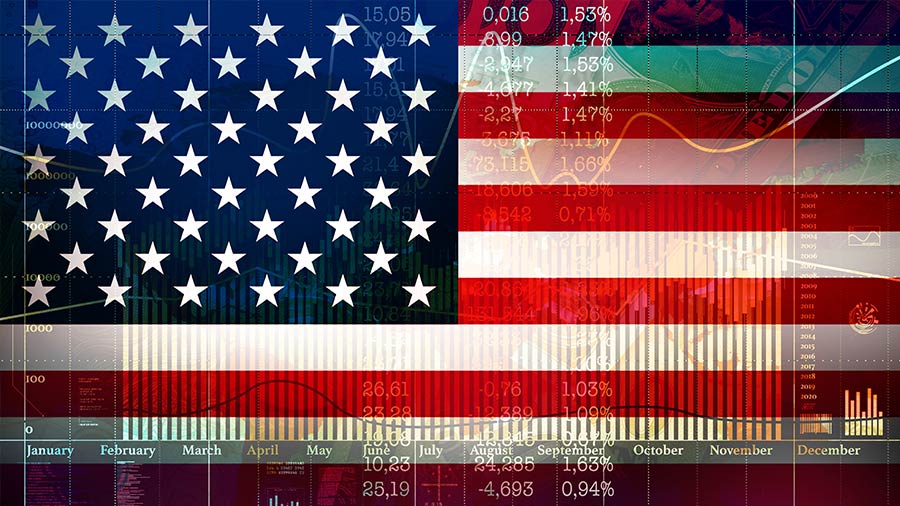Personal Wealth Management / Book Reviews
Book Review: Firefighting? More Like Keystone Kops
A random review of Ben Bernanke, Hank Paulson and Timothy Geithner’s book on 2008’s financial crisis.
On a recent plane flight, I took along a little light pleasure reading—Firefighting: The Financial Crisis and Its Lessons, by former Fed head Ben Bernanke along with former Treasury Secretaries Hank Paulson and Tim Geithner. This book follows each of their memoirs about their experiences leading the US government’s response to 2008’s financial crisis, explaining what they see as its causes, offering a (lot of) detailed justification for their moves—and imparting lessons for the future. Originally, this review was destined for the we-swear-it-isn’t-weekly “Random Musings on Markets.” But it ended up juuuuust a bit longer (though no less random) than our usual tidbits, so it is now a stand-alone piece. Consider it “Random Musings on Firefighting.”
Good news first: As with virtually any book, it has some positive aspects. Chief among them, it is short. Like 130 pages of actual commentary short.[i] The recommendations for the future in the book’s final chapter seem more or less sensible. MarketMinder largely agrees with the idea of consolidating bank regulators from the current morass. Financial firms are currently regulated by any or all of the following: The SEC, Fed, Office of Thrift Supervision, Comptroller of the Currency, state insurance regulators, state banking regulators, the FDIC and, post-crisis, the Financial Stability Oversight Council (FSOC), which tries to coordinate the various regulators’ efforts. There is now also the Consumer Financial Protection Bureau. We likewise agree banks hold vastly more capital today than pre-2008, adding some stability to the system. Finally, this triumvirate’s critique of legislation limiting the Fed’s ability to extend credit to solvent but illiquid banks via the discount window is sensible. The Fed was created in 1913 not to balance employment and inflation, but to serve as the lender of last resort. They failed to do so in 2008, but that doesn’t make the logic faulty.
Those pluses aside, this book looks like a very strange, haphazard attempt to justify the bizarre and schizophrenic actions these fellows took in office. It analogizes their actions to fighting a huge fire[ii]—one requiring unprecedented and extreme action to extinguish it. It is repetitive, which writers should never be. It is repetitive, which writers should never be.[iii]
As for the book’s argument, it claims—without offering any evidence—that traditional tools lacked the power to upend a doom loop of bad loans spoiling mortgage-related securities, which triggered an economic downturn, which triggered layoffs, bringing foreclosures and more bad loans. Wash, rinse, repeat.
The only problem? This isn’t how markets actually work, in my view. Markets lead the economy. They price in widely anticipated conditions. The economy, foreclosures, layoffs (and most employment data) are at best coincident, and at worst late lagging. No recession in American history ended because employment rose. If a foreclosure or bond default is likely, markets probably reflect that in prices way ahead of time.
This isn’t to argue some government action wouldn’t have helped. But what the triumvirate dubs its “creative” actions look a lot less like firefighters’ deeds and a lot more like the Keystone Kops, tripping over one another in a directionless attempt to rein in the crisis. Using government money to broker a merger between JPMorgan Chase and Bear Stearns in March 2008 is fine and basically a traditional policy move. But the alphabet soup of different funds and backstops thereafter? The triumvirate’s approach to troubled firms was unintelligible from the outside, as the book’s recounting of various approaches to Bear Stearns, Fannie and Freddie, Washington Mutual and Lehman makes clear. This is an enormous problem the book fails to acknowledge or even identify.
Which is really odd, because transcripts from 2008 prove they discussed this very fact. For example, the day after JPMorgan Chase acquired Bear Stearns, Fed officials discussed the message this sent to markets. As New York Fed President Bill Dudley put it:
The contrast in the behavior of investment bank equity prices versus credit default swap (CDS) spreads is revealing. Share prices fell sharply, but the CDS spreads narrowed a bit, indicating a lower risk of default. For example, Lehman’s stock price fell 19 percent, but its CDS narrowed by 20 basis points, to 450 basis points, yesterday. This underscores the difference between the $2 per share buyout price for Bear Stearns—less value than people thought—and the introduction of the Primary Dealer Credit Facility (PDCF)—a reduction in the risk that a liquidity problem could drive a firm into insolvency.[iv] (Boldface ours.)
That is a fancy, technical way of saying market participants didn’t think the government would let another bank similar to Bear fail. It might hit equity shareholders, but not bondholders or counterparties. Yet when Lehman encountered identical trouble, the triumvirate chose a different path.
Firefighting goes to great lengths to try to explain this curious choice. They claim they had no option; that there were no buyers and government funding was out of the question. Yet British bank Barclays wanted to acquire Lehman. The book admits as much. The US Treasury denied funding—as did the Fed, a break from the Bear Stearns precedent. Paulson claims this was a negotiating tactic. However, this is hard to square with Fed transcripts from the time. On September 16, several Fed officials referred to denying funding to Lehman as “the right choice,” given backing it could create too much moral hazard—the risk that firms would act wildly on the presumption of a government backstop.[v] They refer bluntly to the Treasury denying funding—not as a bargaining ploy, but outright denying it. So if this was a negotiating tactic, it horrifically backfired. To us, this makes the book seem like an attempt to rewrite the history you can read for yourself on the Fed’s website right now, for free. If only a journalistic heavyweight or chat show host would publicly challenge the authors on that point.
Further, at no point is FAS 157—the mark-to-market accounting rule implemented in late 2007, covering illiquid assets like mortgage-backed securities—even mentioned. While this isn’t shocking, it remains somewhat puzzling that these folks close to the situation can see the impact—big writedowns, even on creditworthy assets that didn’t suffer many losses—and miss the cause. Especially because Bernanke himself alluded to it in a speech he delivered to the Council on Foreign Relations critiquing “procyclical” rules—those that magnify economic or market trends—on March 10, 2009.[vi] This is at the core of the crisis—the reason banks were under so much pressure. The book argues it was mere sentiment. But we think the evidence says otherwise. The lack of any attempt to explore a cause beyond the dubious doom loop these three blame makes the book read less like an even-handed exploration of the crisis and more like an attempt to buttress their reputations.
Finally, the last 100-ish pages are a very odd collection of landscape-oriented visuals. We like visuals! But many don’t shed insight into the rationale behind or effects of their actions. We don’t know the motivation, but it seemed like a data dump attempting to lend the book more credibility than it actually earns.
[i] More on this shortly, as the book runs 242 pages in total.
[ii] Disclosure: I hate analogies. To me, this book illustrates why, as invoking firefighters grants these gentlemen’s highly questionable policy decisions an air of nobility they don’t deserve.
[iii] That was a joke. Also, it repeatedly states that XYZ action we took turned a profit for “taxpayers.” I take umbrage at that suggestion. I am a taxpayer. I didn’t get a check saying, “Here is your pro-rata portion of profits from the Fed’s buying allegedly toxic mortgage-backed securities from Bear Stearns.” Did you?
[iv] “Meeting of the Federal Open Market Committee on March 18, 2008,” Staff, Federal Reserve, 3/18/2008. https://www.federalreserve.gov/monetarypolicy/files/FOMC20080318meeting.pdf
[v] A weird argument considering what happened to Bear Stearns’ shareholders.
[vi] “Financial Reform to Address Systemic Risk,” Ben S. Bernanke, speech given to the Council on Foreign Relations, March 10, 2009. https://www.federalreserve.gov/newsevents/speech/bernanke20090310a.htm
If you would like to contact the editors responsible for this article, please message MarketMinder directly.
*The content contained in this article represents only the opinions and viewpoints of the Fisher Investments editorial staff.
Get a weekly roundup of our market insights
Sign up for our weekly e-mail newsletter.

See Our Investment Guides
The world of investing can seem like a giant maze. Fisher Investments has developed several informational and educational guides tackling a variety of investing topics.





